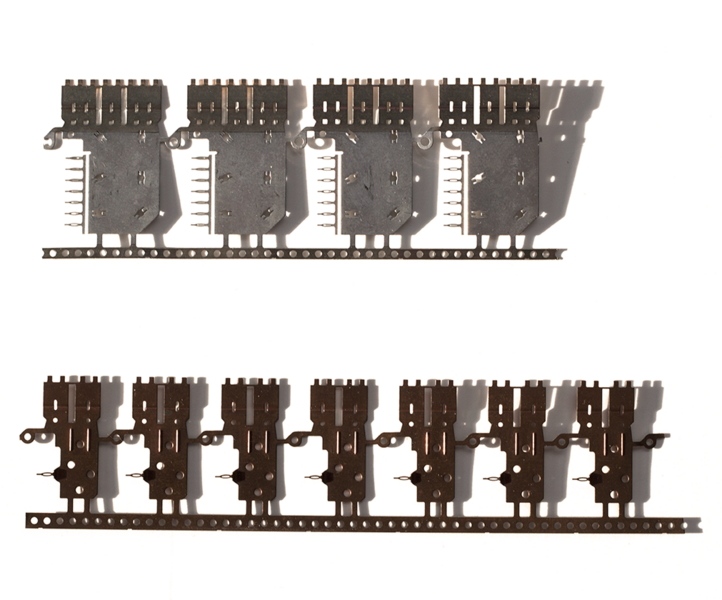Grain Boundary-Engineered Nanocrystalline Metal Alloys

Nanostructured nickel-tungsten coating, top, protects copper parts from corrosion and wear. (Photo: Denis Paiste/Materials Processing Center)
Novel nanostructured alloys from spinout Xtalic can be tailored to provide an array of capabilities to military and civilian customers, ranging from durable, corrosion-resistant electronic interconnects to structural and protective materials that combine the strength of steel with the weight of aluminum.
These extremely robust metal alloys are the result of extensive research into grain boundary engineering — the precise manipulation of a bulk metal’s grain size to affect its hardness, strength, ductility, and other mechanical properties — led by longtime ISN-affiliated MIT Professor Chris Schuh, recently departed from MIT to become Dean of Engineering at his doctoral alma mater, Northwestern University.
Using advanced computational materials design techniques, Xtalic can select the proper primary and additive metals to develop new alloys with the properties and features needed by customers.
Xtalic’s Xtronic nanostructured nickel offers robust charging capabilities to more than two billion waterproof smartphones and has saved hundreds of millions of dollars through precious metals reduction in the telecommunications industry; remarkably hard Luna nanostructured silver enables charging ports and other electronic connectors in electric vehicles and wearable devices; and Xtalium nanostructured aluminum helps with load reduction in applications where minimal mass is of maximal importance.

